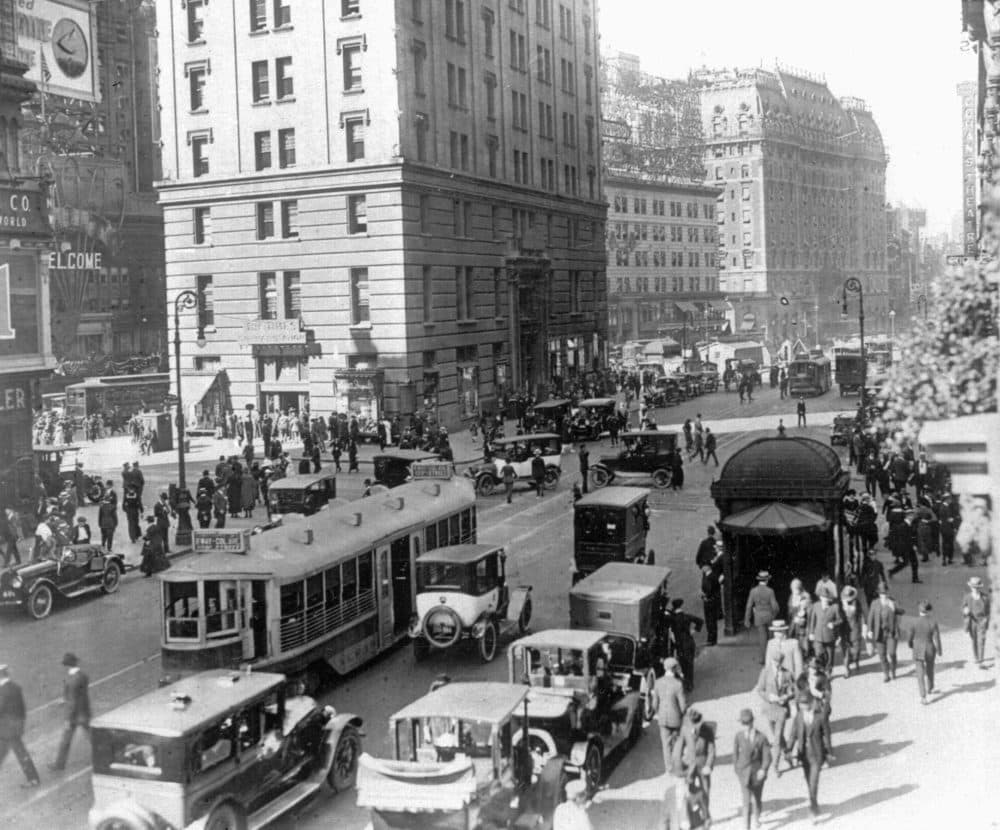Advertisement
Dear On Point:
'People Will Bounce Back': How COVID-19 Parallels Past Pandemics

This is part of our hour on the pandemic's impact on mental health. Listen here.
Steven Taylor is a clinical psychologist and professor in the psychiatry department at the University of British Columbia. In October 2019, Taylor published a book called “The Psychology of Pandemics: Preparing for the Next Global Outbreak of Infectious Disease."
And it's an interesting story there, because when Steven wrote the book and first tried to get it published, no one would publish it. Fortunately, he eventually got it published ... because just four months later, the next global pandemic became a reality.
DIARY TRANSCRIPT
TAYLOR: "All of the phenomena we're seeing today have been seen in past pandemics. In fact, the parallels outweigh the differences, not just in the 1918 one, but in other pandemics, too. The rise of anticipatory anxiety before the actual spread of infection in communities. The rise of racism, blaming people, conspiracy theories.
"At the time, that was World War I. And the U.S. and England were at war with Germany. In both of those countries, there were conspiracy theories that the influenza pandemic or that the virus was actually caused by the Germans as a bioweapon. And in fact, there was a statement from a health official appearing in the New York Times in 1918 claiming that German agents in U-boats, that is, submarines were coming ashore in Manhattan in the dead of night and going into cinemas in public places and so forth and releasing the the flu virus to contaminate people.
"There was also a rumor circulating at the time that the Bayer Pharmaceutical Company in the U.S., which was a formerly a German company, that they were putting the virus into the aspirin tablets. And that conspiracy theory got circulated so widely that the health authorities in the U.S. had to go and officially test the tablets to reassure people that there was no virus in them. Of course there wasn't.
Advertisement
"The conspiracy theories today are just recycled conspiracy theories from past pandemics. There are varying details, but the themes are exactly the same. ... There was panic buying. There was stigma or fear and avoidance of health care workers, and there was the rise of anxiety about getting infected. And conversely, there was also this disregard for the whole thing, thinking the thing is exaggerated. The big difference is everything is faster and more of it, because we've got the 24/7 news cycle, social media and so forth, but fundamentally pretty much the same phenomena.
"I'm going to tell you something that no one believes when I tell them. No one ever believes this. People will bounce back. This is what happened in 1918. In western countries, everyone was wearing a mask. We were all masked up. Then the pandemic ended around 1920. The roaring '20s hit in. And if you look at photographs of the roaring '20s, no one is wearing a mask. And everyone is out socializing and congregating.
"And in fact, we're starting to see this already in Wuhan. When they were released from lockdown, there were photographs circulated in August of last year of parties. And there was one in particular that struck me. It was a pool party, a massive pool party where they had a band playing. And the photograph, there was thousands of people there on inflatable rubber toys and they're partying and dancing. And no one is wearing a mask.
"Thousands of people. That is what's going to happen. But that said, there will be a proportion of people, and it's really hard to predict — it could be 10%, it could be a little higher — who will have lingering psychological problems.
"And I'm thinking depression for people who've lost loved ones or lost their businesses or homes or so forth, have had severe losses. Obsessive compulsive disorder for people who have had preexisting obsessive compulsive tendencies and who've experienced the serious threat of infection. And post-traumatic stress disorder for people who've been traumatized during the pandemic, people who got, for example, deathly ill and were frightened [they] were going to die.
"So, yes, some people will have lingering psychological problems, but most people will bounce back to their surprise and delight. And I'm expecting that there will be a short-lived period of hyper sociability, a kind of mini roaring '20s as people just bounce back and you say, 'Oh, yay, this is over.'"
In this diary ... we hear from:
Steven Taylor, clinical psychologist and professor in the psychiatry department at the University of British Columbia.
This segment aired on February 12, 2021.
